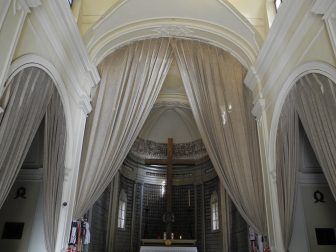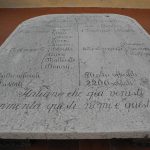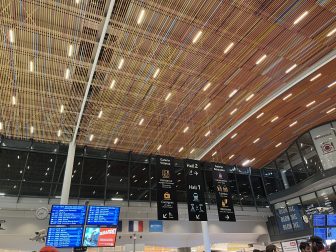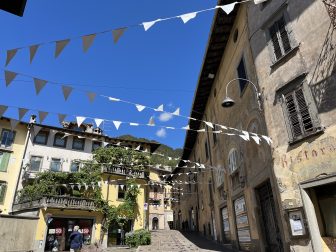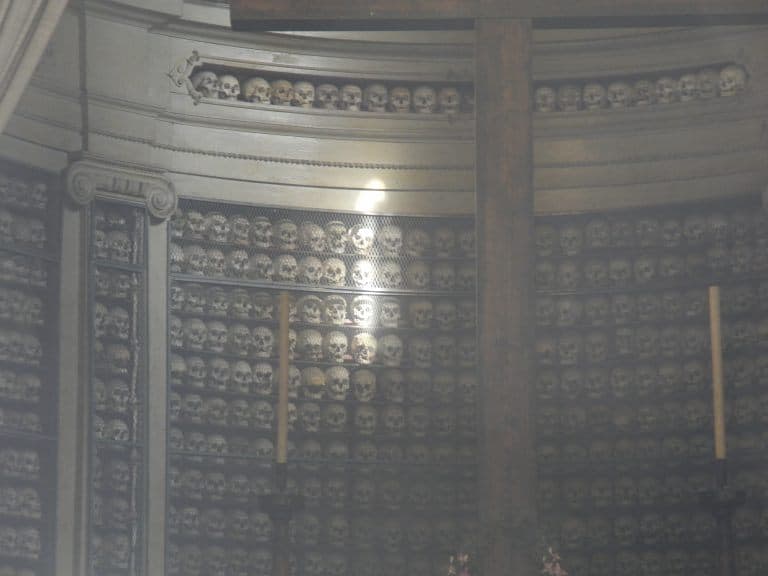
[ Oct.2017 ] Solferino, where we visited from Milan in Italy for one day, is famous for a battle.
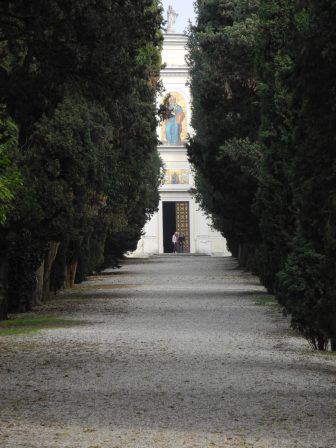
Because it was not a well planned battle and the number of the dead and injured was huge and also this battle was a decisive one for the war itself, every history textbook in Europe mentions this battle.
On the road from the square where the town hall is to the Church of San Pietro which is the Ossuary, there were plates explaining the history regarding the battle embedded on the ground.
My husband murmured “The children here must grow up always hearing about the Battle of Solferino” pitifully.
Because this town does not have anything else, the Battle is all over the place.
The avenue towards the church was solemn.
We reached the church and found that the outside of the church was ordinary, but once we got in, we gasped in surprise.
Beyond the curtain which was draped like a stage, there was a wall with full of skulls.
There was a sunbeam on it.
We saw bone chapels in Portugal and in Czech Republic recently, but this one was different.
The skulls and other bones were separated and they were very well organised.
These are the bones of 7000 soldiers who died during the Battle.
In those days you could not take the bones from the grave until 10 years later to prevent the problems of hygiene, this Ossuary was built in 1870.
Looking at these skulls, I thought it is more meaningful to be here and keep telling the history to the future generations than becoming ashes and forgotten.
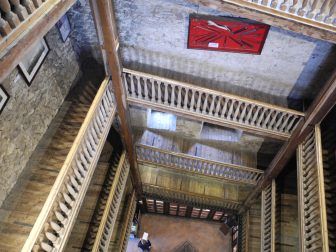
After this church, we went up to the hill to a tower called Rocca.
Rocca is the highest point around here and it was strategically important, so in the Battle, they fought for this tower.
Rocca itself is much older, built in the 11th century.
In 2011, as a part of events for the 150th anniversary of the unification of Italy, they made it a museum.
Inside, there was a gentle slope and we could go up to the top, looking at some exhibits and videos regarding the Battle.
On top of the tower, the view was nice and there was a monument showing how many Italian and French soldiers died during the Battle.
Another important point is that the Red Cross was born because of this Battle.
The Swiss, Jean-Henri Dunant saw the Battle himself and being shocked he wrote a book 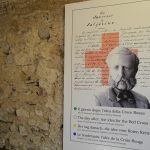
There was a plate explaining this in Rocca.
By travelling, the bits and pieces we learned at a desk a long time ago get together and become realistic, which is really interesting.

